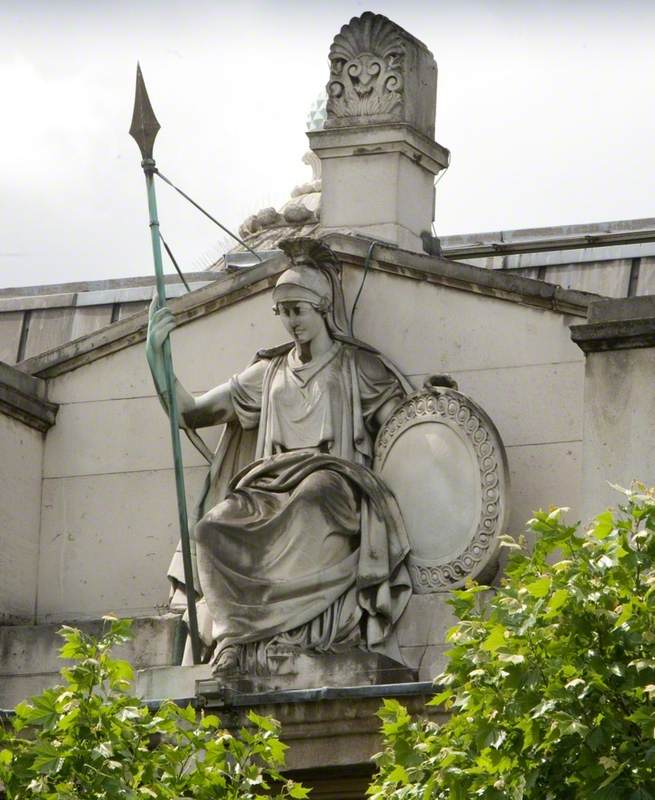How you can use this image
This image can be used for non-commercial research or private study purposes, and other UK exceptions to copyright permitted to users based in the United Kingdom under the Copyright, Designs and Patents Act 1988, as amended and revised. Any other type of use will need to be cleared with the rights holder(s).
Review the copyright credit lines that are located underneath the image, as these indicate who manages the copyright (©) within the artwork, and the photographic rights within the image.
The collection that owns the artwork may have more information on their own website about permitted uses and image licensing options.
Review our guidance pages which explain how you can reuse images, how to credit an image and how to find images in the public domain or with a Creative Commons licence available.
Notes
Add or edit a note on this artwork that only you can see. You can find notes again by going to the ‘Notes’ section of your account.
At the eastern end of the Gallery, overlooking the church of St Martin-in-the-Fields, is a statue of Minerva, the goddess of wisdom. It was originally designed by the British neoclassical sculptor, John Flaxman, as a seated figure of Britannia, brandishing a spear and shield, to appear on Marble Arch, designed as a ceremonial entranceway by John Nash. Flaxman was chosen to provide the commemorative sculptural decoration, but after his death in 1826 this work was divided between his former pupil Edward Hodges Baily, Charles Rossi and Richard Westmacott. Work started in 1827 but was halted after the death of George IV and then scaled back after 1831, when the new king, William IV, in a cost-cutting exercise, got rid of its sculptural elements.
Now blank, Minerva’s shield originally depicted the head of Lord Nelson, to commemorate his victory over Napoleon at Trafalgar. Baily transformed Britannia into Minerva by removing Nelson from the shield. The balustrade over the east front had to be strengthened to support the statue’s nine-ton weight.
Title
Minerva
Date
worked on twice, by 1830 & altered about 1834
Medium
Portland stone
Accession number
H216
Acquisition method
commissioned by the Office of Works for the Marble Arch, and installed on the gallery by 1838
Work type
Sculpture


